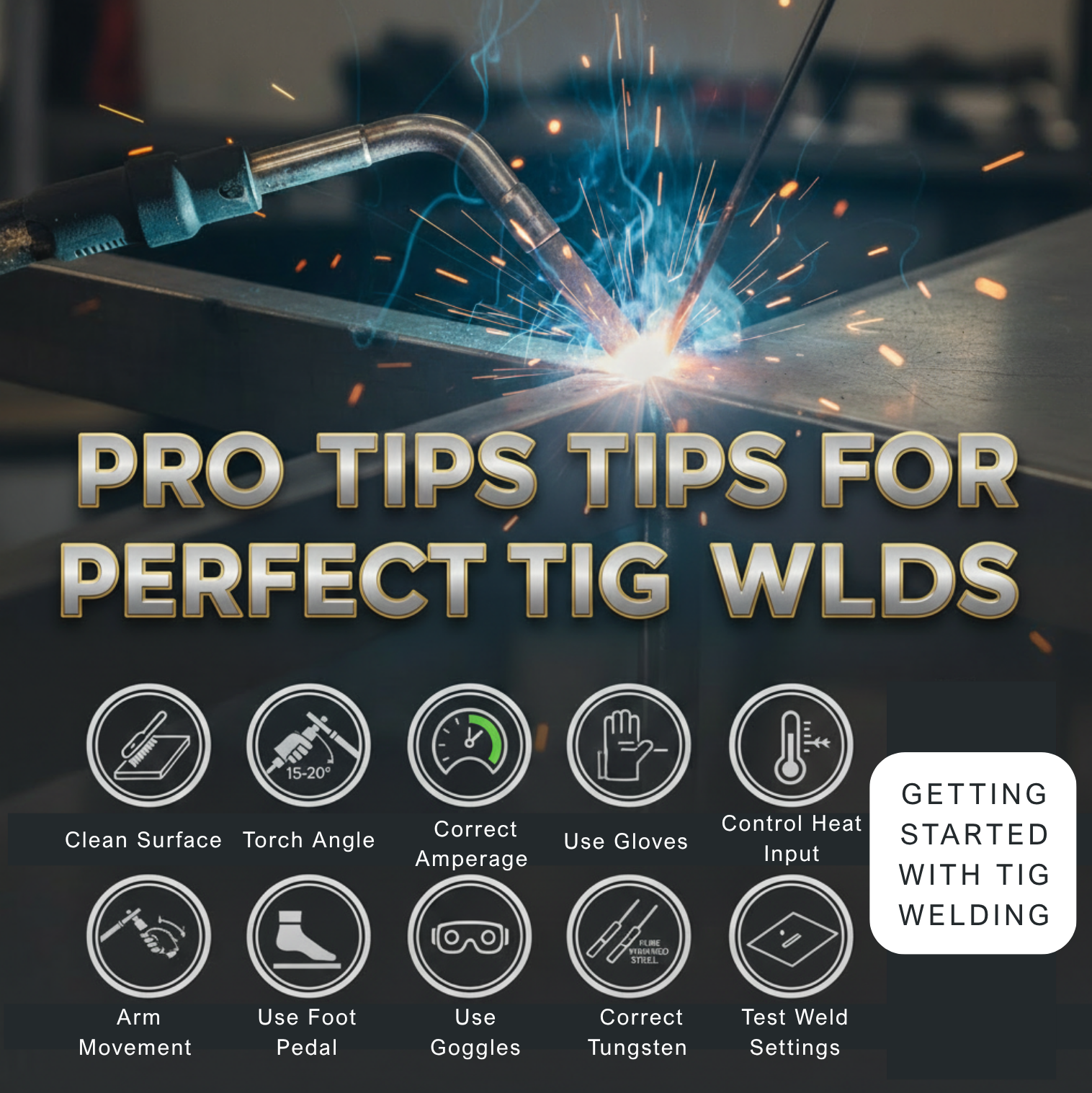Introduction to TIG Welding
Modern fabrication relies on welding as its backbone, and it is typically associated with different welding methods. However, TIG welding (Tungsten Inert Gas) stands out in terms of precision, clean appearance, and versatility. Joiners can be artisan hobbyist, journeyman craftsman, or industrial hands-on fabrications. Becoming talented at a TIG welding machine can elevate your skills.
TIG welding leads to extraordinarily clean and strong joints compared to several welding processes which utilize a lot of filler material or flux. This is a benefit to choose for welding such materials like stainless steel, aluminium, magnesium, and other exotic metals. These are areas where precision and appearance matter.
What Is TIG Welding and How Does It Operate?
TIG welding (also called GTAW, or gas tungsten arc welding) utilizes a non-consumable tungsten electrode to generate an electric arc that melts the base metal. A shielding gas (usually argon or helium) is used to protect the weld area from contamination. Smooth, high-quality welds requiring little finishing are characteristic of this process.
Unlike another welding option (MIG or stick welding), TIG also allows for a high degree of control over the weld puddle, creating neat and durable welds that are optimal for aircraft, vehicles, and ornamental applications.
The History and Evolution of TIG Welding Machines
From the 1940s, TIG welding began being developed in the aircraft industry where weight efficient metals, such as aluminium, were extremely important. The original TIG machines of the late 1940s were bulky and inefficient in comparison to today’s inverter-based TIG machines, but they were effective in what they accomplished. Today’s inverter-based TIG welders are light-weight, energy efficient, and digitally controlled, and suitable for both workshop and field applications.
Components of a TIG Welding Machine
It is essential to understand all aspects of your TIG machine to develop the skill set needed to succeed.
• Power Source and Control
Current settings, pulse controls, or even programmable memory are now common in ISO compliant TIG welders.
• Torch and Tungsten Electrode
The torch directs the arc and the tungsten electrode can withstand extreme temperatures without melting away. Depending on the base material, the tungsten type can vary: pure, thoriated, or ceriated.
• Filler Rods and Shielding Gas
Filler rods are used to add material to the joint; a form of argon or a mix of argon and helium will be used to shield the weld area from oxidization.
• Cooling and Foot Pedals
Water-cooled torches reduce the potential for general overheating; foot pedals allow a real time adjustment of amperage to create the perfect weld.
• TIG Welding Process
TIG welding can take time and requires patience in the process.
• Argon Gas
Argon is a common choice for shielding gas, both because it allows for stable arcs and it helps to keep the base metal from drama contamination. Alternative shielding gas will include helium in conjunction with argon for thicker pieces of material to enhance heating process.
• Polarity Settings
Weld with AC settings for aluminum and magnesium; DC is used for iron, stainless steel, and copper type alloys.
• Precision and Cleanliness
Contaminants such as oils or rust will ruin a weld. Always clean before welding.
Types of TIG Welding Machines
- Manual TIG Welders
Perfect for skilled operators who want maximum control.
- Inverter-Based TIG Welders
Compact and energy-efficient, offering stable arcs with less power consumption.
- Industrial and Multi-Process TIG Machines
Heavy-duty units that combine TIG, MIG, and stick capabilities for large-scale projects.
- Choosing the Right TIG Welding Machine
When buying a TIG welding machine, consider these essential factors.
- Material Type, Amperage, and Duty Cycle
Your machine’s amperage must match your material thickness. A higher duty cycle means longer continuous operation.
- Brand Reputation and After-Sales Support
Stick to well-known brands that offer reliable service and parts.
- Setup and Safety for TIG Welding Essential Safety Gear
Always wear flame-resistant gloves, a welding jacket, and an auto-darkening helmet. Proper ventilation is also critical.
- Workspace Setup
A clean, clutter-free area with non-flammable surfaces ensures safety and precision.
- Maintenance Tips
Check cables, clean torches, and replace worn parts regularly to maintain arc stability.
10 Expert Tips for Perfect TIG Welding
1. Always Start with a Clean Surface – Using a stainless steel brush, dent and oxidation should be removed.
2. Attend the Torch Angle – Angle the torch over 15-20 degree for the greatest gas coverage.
3. Use Correct Amperage – Too high will cause burn back. Too low will not penetrate as required.
4. Control Heat Input – Too much heat may lose the integrity of the metal.
5. Perfect Filler Timing – Always feed filler rod at the same amplitude for a consistent weld bead.
6. Keep Setup/Smooth Arm Movement – Smooth and even arm movement ensures you will get an even weld.
7. Use a Foot Pedal – This allows for precise control of amperage.
8. Use the Correct Tungsten – For Aluminum: use pure tungsten. For Steel: Either use thoriated tungsten.
9. Test Weld Settings – Test on scrap before welding actual parts.
10. Check your Welds – Once cool, you can check for cracks, pores and uniformity.
Common Mistakes in TIG Welding and How to Avoid Them
| Mistake | Cause Solution |
| contaminated welds | dirty material or gas always clean material with gas flow and equal protection from gas |
| cracking | overheating control temperature with correct amp |
| porosity | shielding gas coverage keep correct angle on torch and run correct flow |
Applications of TIG Welding
• Automotive/Aerospace – Lightweight alloy components.
• Art/Sculptures – Fine, aesthetic work with the steel process.
• Precision Manufacturing – High quality, high clean joints.

